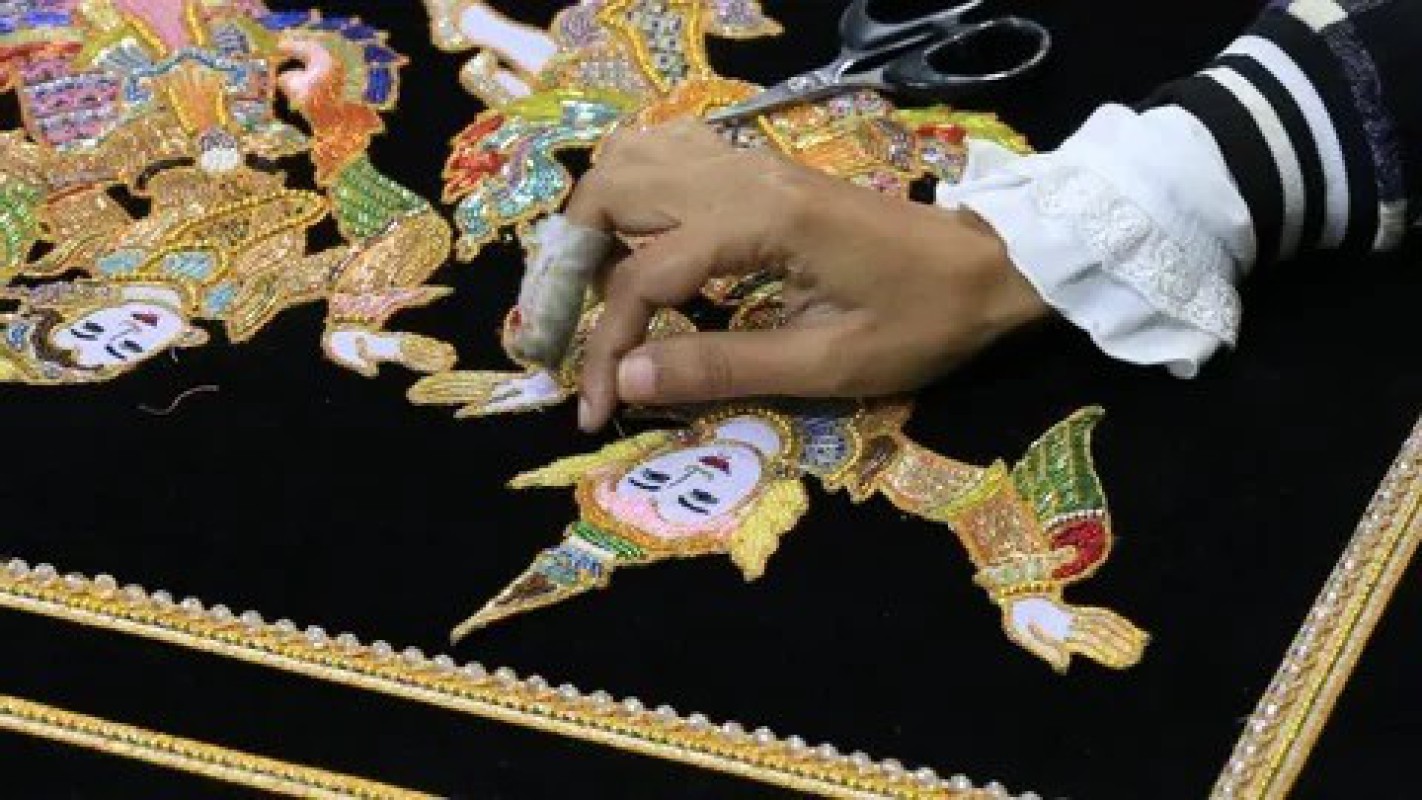Myanmar's Golden Threads: A Tapestry of Tradition and Innovation

776

Thiri Khit Oo (NP News) - Sep 27
Myanmar’s rich history of textile art and embroidery traces its roots back centuries, influenced by both local traditions and neighboring countries. From its earliest origins, weaving and embroidery were not only decorative but carried deep cultural significance, often linked to religious ceremonies and the identities of various ethnic groups. These groups developed their own unique styles, designs, and colours, using textiles to tell stories and reflect social status.
The art of embroidery, in particular, blossomed during the Konbaung era under the reign of King Alaungminthaya. This intricate craft, known for its use of silver and golden threads, evolved with the introduction of new materials from trade routes connecting Myanmar with Europe and India during the late Konbaung and early Yadanabon periods. Imported silk, velvet, cotton, and sequins provided a fresh canvas for Myanmar artisans, who adapted these materials into luxurious designs, often adding gems to create value-added pieces. These ornate embroideries were treasured by the royal families and the wealthy, and soon became popular souvenirs for visitors.
During the 19th century, Mandalay, the King's Land, was renowned for its exquisite embroidery art and production industry. Large embroidered pieces adorned not only the royal palace but also Buddhist monasteries and the homes of the wealthy, serving as both sunshades and interior decor. Additionally, people began crafting garments that combined embroidery and art.
To begin the embroidery process, a design is sketched onto plain silk or velvet cloth, which is then securely fastened in a square wooden frame. A skilled artisan then uses a needle to stitch the design, filling it with gems, cotton, or sequins. Finally, silver and gold threads are carefully added to complete the piece.
Myanmar's distinctive embroidery features two primary styles: traditional and modern. Traditional designs often depict the life of Buddha, Myanmar's traditional festivals, the Ramayana epic, Buddhist philosophy, cosmology, and historical events. These traditional motifs are particularly captivating to foreigners.
During the British colonial period in the early 20th century, a cultural exchange took place. This led to a fusion of local styles with colonial influences, resulting in modern embroidery designs and techniques that incorporated new patterns and methods.
Following Myanmar's independence in 1948, there was a resurgence of traditional crafts, including embroidery. A renewed emphasis on preserving cultural heritage led to many artisans continuing to practice and pass down their skills.
Myanmar is home to various ethnic groups, each contributing unique embroidery styles with distinctive techniques and themes that reflect Myanmar's rich cultural heritage.
Today, Myanmar's embroidery continues to evolve, blending traditional techniques with contemporary aesthetics. Artisans are creating innovative designs that appeal to both domestic and international markets. This vibrant art form serves as a testament to Myanmar's rich cultural heritage and the enduring creativity of its people.
Reference – Antique Collectors Haven
- Myanmar Tours Blog
- Myanmar Handicrafts
- Myanmar Photo Archive